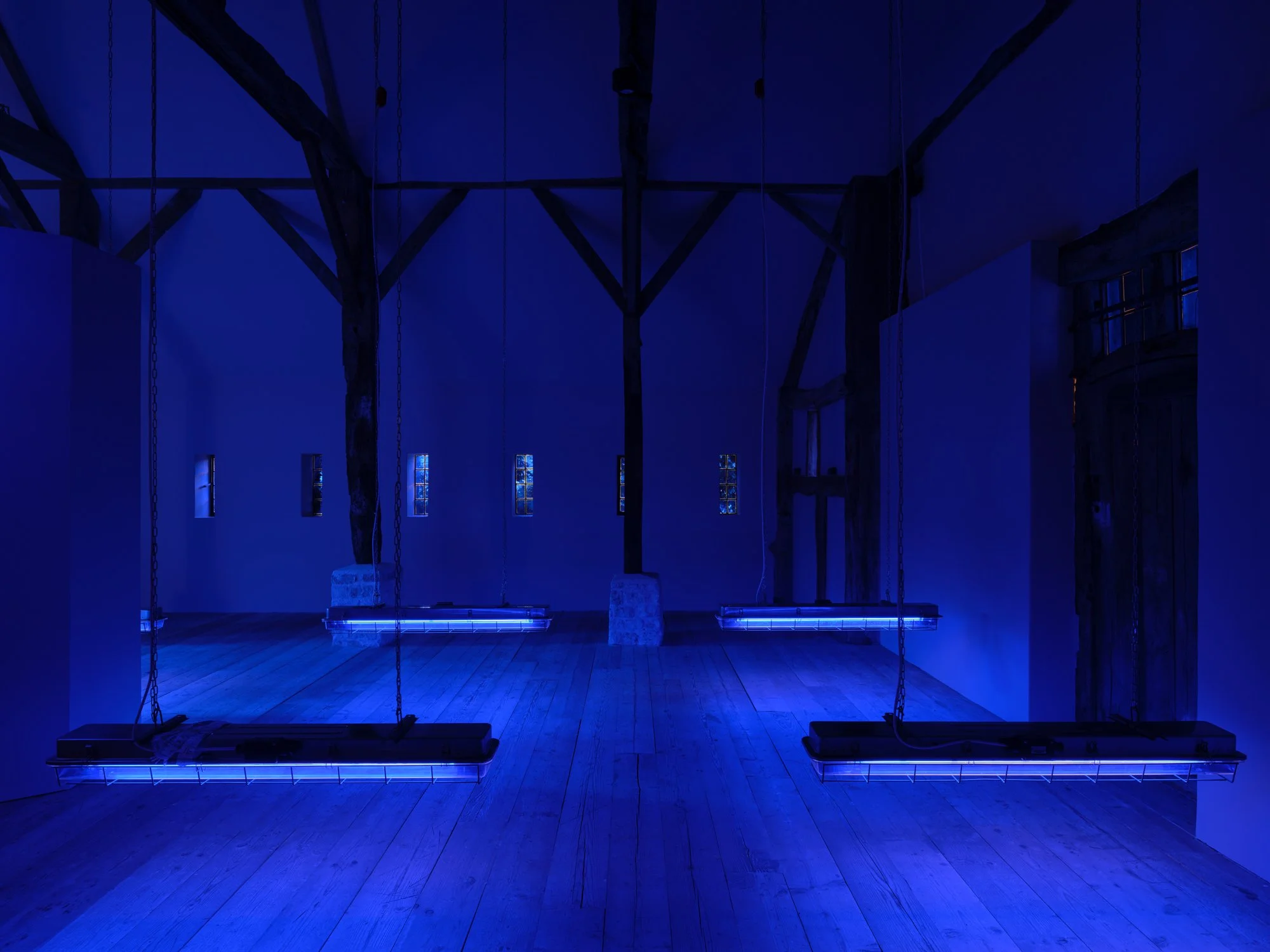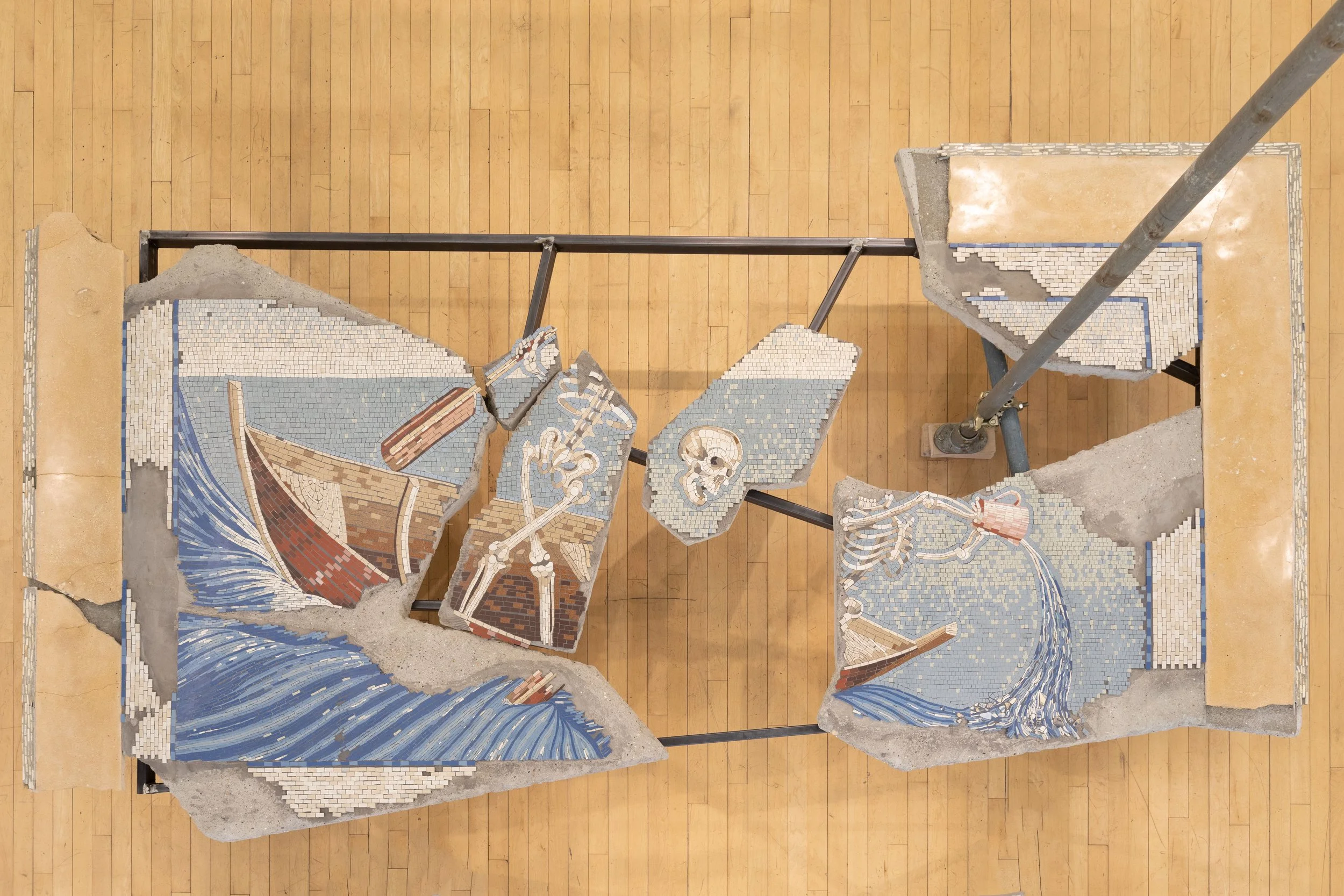Ali Glover

“I want there to be this tension over whether those moments are intentionally placed there by design—or if they create this haunting element that’s slipped into your subconsciousness.”
Ali Glover is a London-based artist whose sculptural installations and collective projects interrogate infrastructure, visibility, and site through playful yet politically charged interventions. Drawing from a rural upbringing and a background in fine art, Glover creates work that responds to architectural contexts, urban neglect, and the hidden systems that shape our environments. In this interview, he reflects on co-founding F.A.F Collective, the psychological power of spatial design, and finding freedom in impermanence and disruption.
Could you tell us a bit about yourself and your background?
I’m a London based Artist. I grew up just outside of Worcester, in a very rural area where there wasn’t much to do other than explore the landscape. My upbringing was defined by that urge to explore what paths led where and what narratives presented themselves in the world surrounding me.
I didn’t have the experience of going to many galleries and museums growing up, so on foundation I remember being so excited but I honestly found those first lectures, crits and seminars so daunting. During my BA at Chelsea College of Art my practice started to shift, representing something closer to what it is now. My interests leaned away from painting and more towards architectural infrastructures, roles of walking within art and whilst traditional sculpture interested me materially, I became engrossed with artists such as Robert Smithson and Francis Alys. From that I guess I took what I knew in exploring unchartered terrain growing up and put that into London taking note of layers that made up our everyday, and how that could incorporate subversive agency.
I spent around 4 years out of education developing my practice through residencies and group shows before going to Goldsmiths on the MFA programme.
Your installations often incorporate elements from the exhibition space itself. How do you decide which architectural features to highlight or respond to, and what role does this process play in shaping the viewer's experience?
It can be quite a methodical process; I sometimes have to spend quite a lot of time in the exhibition space and others it’s very instinctive. I want to understand how that space feels without me intervening, what does it naturally give off and how my practice can work in tandem with that. For me it’s important to have these surreal moments, that add a layer to the background whilst differentiating themselves enough that your eye catches them. I want there to be this tension over whether those moments are intentionally placed there by design (if so what for) or they create this haunting element that’s slipped into your subconsciousness. It creates this remoteness from reality, whilst never fully engaging with fantasy.
Nothing Concrete
Skin it
Skin it
You are also a founding member of F.A.F Collective, which creates temporary, fantastical structures in overlooked city spaces. Could you tell us more about the collective’s goals and how its approach to narrative and site influences your individual practice?
F.A.F kind of naturally just came into being, we all shared an indifference to the financial and physical restraints placed on the creation of artwork in London. Seeing the misuse of land ownership and development was and still is a big factor in our frustration and why we set out in doing this. At first it started as more of a sculpture club, we wanted to enjoy creating these structures together without those restraints. However we realised we could have more of an impact by adding to these overlooked spaces. It’s quite hard to say what our goals are because I think F.A.F means something different to each of us, for me I’m interested in those second glances from station platforms etc so people question the nature of what’s going on in the multitude of spaces like these around London. What are the narratives happening here, like how wild it is that a whole street can be owned by one person yet we have such a huge housing crisis.
I think more than anything F.A.F gave a freedom to all of us in our use of materials, and through that I think I’ve been able to expand my own approach when it comes to my individual practice. I think previously I’d rely on ideas around site specificity and get caught up in that, where as I think through F.A.F I’ve learnt to be more playful with my practice. It’s also got me to consider the life span of a work that is site based, how does it exist past the first outing, does it ever exist in the same way again?
Much of your work seems to explore the tension between visible and hidden systems. How do you use light, material, and spatial layout to comment on the psychological effects of infrastructure?
A lot can also be placed down to value structures really, questioning what we put value on and looking at the poetry of unseen mechanics that determine our wider movement and who determines that? For me using the existing architecture of components of a gallery is important to that process even if it simply evokes the question of where the line is drawn between a work or a regular component of the gallery. It allows for this discussion of the interplay building and unbuilding of these layers to happen. A more literal example say is when I showed at Tabula Rasa Gallery, I turned the gallery walls inside out to reveal the health and safety warnings on the plasterboard. I wanted to look at how these warnings aren’t for the individual benefit but for the insurers, acting as horror in the performance of care.
FAF - As a child with a matchstick castle
FAF - All I could see through the porthole was glittering dust
Construct, 2024, Installation view, Cob Gallery
Santi Gallery
Tell us a bit about how you spend your day / studio routine? What is your studio like?
I’m currently going through a bit of a studio restructure, so I’m kind of just refiguring it out myself. I’ve recently removed a permeant desk space, my time in the studio doesn’t really have a set format and I needed my time there to reflect that a bit more.
I’ve often considered whether I really have a studio practice, my surroundings give me so much energy and inspiration that I often need to spend a lot of time being absorbed by them. I’ll gather observations, materials and audio clips of me interacting with the surroundings as a documentational library of sorts. And this process doesn’t really stop so I do have to manage my time a bit, so once I’m in the studio I’ll spend it by testing material processes, casting elements and parts of installation materials seeing how they interact with my movement in the space.
What artwork have you seen recently that has resonated with you?
Klara Liden’s show at Sadie Coles HQ was brilliant, it really captivated me, I wish I’d been able to go a couple more times. I was particularly mesmerised by her films in the show, there was a collective loneliness but in the films, you’re left with a guide that transverses you through these cracks in the city. The camera is so close to the body in front that you only capture peripheral glimpses of your surroundings. Both haunting and slightly comforting it felt like an eerie exploration of the mechanics that flow through the city.
I thought that the billboards got a lot of airtime in that show, and they were beautiful but the dull hum they created in turning to the next screen elevated their status in bringing you to this subsection of the city that is in-between stages, a temporary blankness where you can dare to fantasise an alternative.
Is there anything new and exciting in the pipeline you would like to tell us about?
So I’m currently showing new works at Santi Gallery alongside Robin Megannity and Julia Thompson. The show’s curated by Kollektiv Collective whom I’ve worked with a few times now. They curated my most recent solo show at Inspection Pit. We have a great working relationship and I’m grateful and slightly surprised they wanted to work with me again. It’s also one of the few times I’ve showed wall-based work, the themes of these works have come from elements of ideas that I wanted to explore in a previous show but they didn’t quite make it into the final exhibition.
All images courtesy of the artist
Interview publish date: 23/07/2025
Interview by Richard Starbuck






